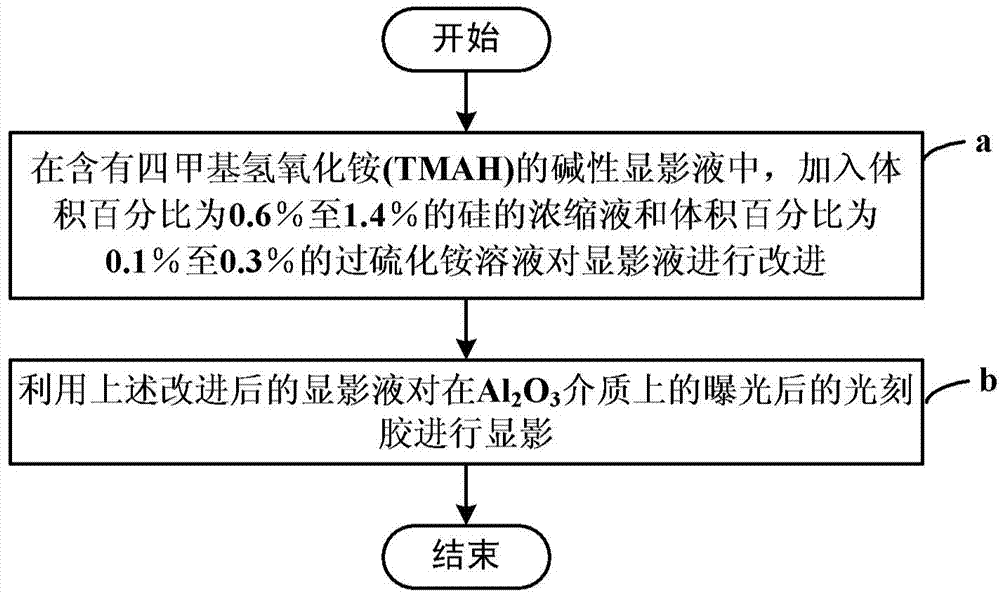Method for improving photoetching process used on Al2O3 medium
A photolithography process and dielectric layer technology, which is used in photosensitive material processing, microlithography exposure equipment, photolithography process exposure devices, etc., can solve the problems affecting device performance, small process tolerance, high price, etc. Stable, small process tolerances and high repetition rates
- Summary
- Abstract
- Description
- Claims
- Application Information
AI Technical Summary
Problems solved by technology
Method used
Image
Examples
Embodiment 1
[0028] Example 1: Al photoetched based on AZ4620 photoresist 2 o 3 Medium layer, the specific steps are as follows:
[0029] Step 1: In the alkaline developer solution containing tetramethylammonium hydroxide, add the concentrated solution of silicon (Si) with a volume percentage of about 1% and ammonium persulfide ((NH) with a volume percentage of about 0.2% 4 ) 2 S 2 o 8 ) solution;
[0030] Step 2: Use the above-mentioned improved developer solution on Al 2 o 3 The exposed photoresist on the dielectric layer is developed.
Embodiment 2
[0031] Embodiment 2: Al photoetched based on AZ5214 photoresist 2 o 3 medium layer, the specific steps are as follows.
[0032] Step 1: In the alkaline developer solution containing tetramethylammonium hydroxide, add the concentrated solution of silicon (Si) with a volume percentage of about 1% and ammonium persulfide ((NH) with a volume percentage of about 0.2% 4 ) 2 S 2 o 8 ) solution;
[0033] Step 2: Use the above-mentioned improved developer solution on Al 2 o 3 The exposed photoresist on the dielectric layer is developed.
Embodiment 3
[0034] Embodiment 3: Al photoetched based on AZ6112 photoresist 2 o 3Medium layer, the specific steps are as follows:
[0035] Step 1: In the alkaline developer solution containing tetramethylammonium hydroxide, add the concentrated solution of silicon (Si) with a volume percentage of about 1% and ammonium persulfide ((NH) with a volume percentage of about 0.2% 4 ) 2 S 2 o 8 ) solution;
[0036] Step 2: Use the above-mentioned improved developer solution on Al 2 o 3 The exposed photoresist on the dielectric layer is developed.
PUM
 Login to View More
Login to View More Abstract
Description
Claims
Application Information
 Login to View More
Login to View More - R&D
- Intellectual Property
- Life Sciences
- Materials
- Tech Scout
- Unparalleled Data Quality
- Higher Quality Content
- 60% Fewer Hallucinations
Browse by: Latest US Patents, China's latest patents, Technical Efficacy Thesaurus, Application Domain, Technology Topic, Popular Technical Reports.
© 2025 PatSnap. All rights reserved.Legal|Privacy policy|Modern Slavery Act Transparency Statement|Sitemap|About US| Contact US: help@patsnap.com



